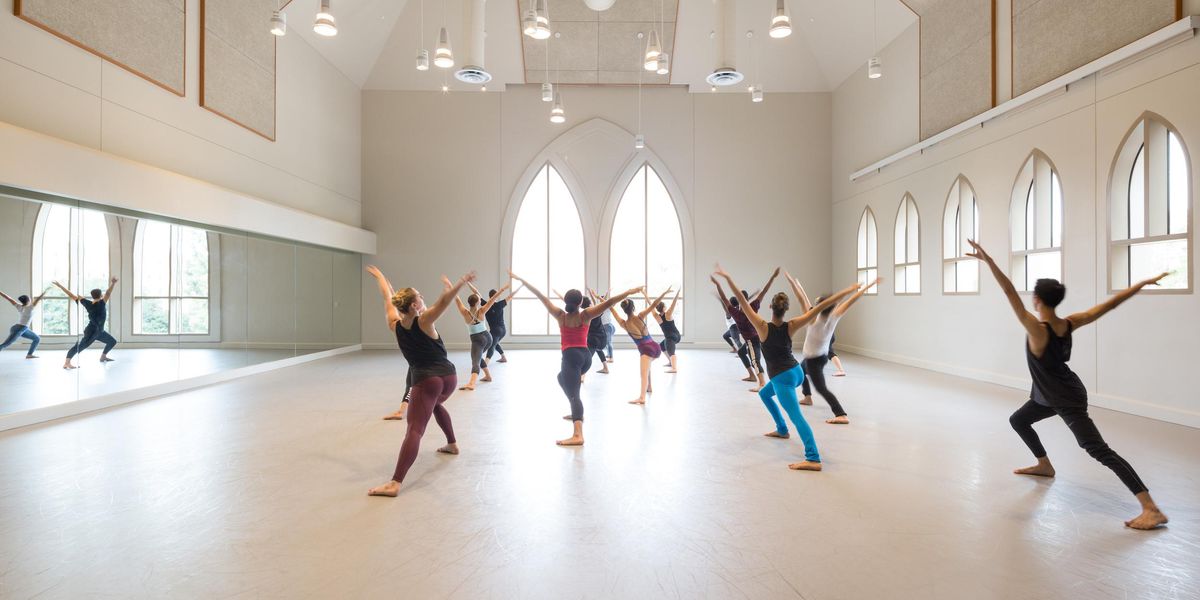Away from Tokyo, Toward a Dance of Darkness
In the midst of my ballet sojourn in Japan last month, I was lucky to see one of today’s greatest (wildest, deepest) butoh performers. A cross between a rock star, a wounded panther, and a Ghandi-like figure, Ko Murobushi is a true butoh master. During his solo Ritournelle, I got the feeling he was digging deep into his gut to scoop out raw emotions: fear, pain, rage. If I hadn’t seen a human being in front of me, I would have thought those hissing, scraping, squealing sounds came from a hunted animal about to die. In fact, in a poem accompanying the program notes (which I did not see translated until later), Ko wrote, “Trying to die, I started to dance/So, today is the day I will meet the tiger.”
Wendy Perron with Yuko Mitsuishi on the Tokyo subway.
I had gone out to the Red Brick Warehouse Studio in Yokohama with Yuko Mitsuishi, a young dancer who has performed with Catherine Galasso and Yoshiko Chuma in New York. The delightful Yuko guided me on various trains to this harbor city just outside Tokyo. The radical aura of butoh is a sharp contrast to ballet, giving me a completely different experience of Japan. Butoh is a dance form that is indigenous to Japan, and a cultural export really. Ko, a founder of famed butoh group Dairakudakan before becoming a powerful soloist on his own, has performed all over the world.
Here are some of the images of Ritournelle, which had premiered at the ImPulsTanz Festival in Vienna last summer:
A man twists his hands as though trying to open a can. But soon it’s more like he is trying to wriggle out of his suit jacket. As he continues this private action, he seems to be compressing his lungs, his hand shaking as though with palsy. His breathing is audible. We are witnessing an everyday task escalating to drastic physical and existential proportions. Blackout.
Photo by Yoichi Tukada, Courtesy Ko Murobushi
Photo by Yoichi Tukada, Courtesy Ko Murobushi
Lights up. Ko is all the way stage right, shedding his suit to reveal a bare body with only a G-string. He starts scratching the corrugated wall like he wants to escape. On the floor again, he collapses each body part, as though his body is emptying its energy, bit by bit. After much struggle, he rises and slowly lifts his eyes like he is going to thank the heavens for allowing him to stand up. His lips start to move. Does he want to speak to us? Suddenly he keels over backward and lands with an alarming thud. He rises into a yoga shoulder stand, the kind where you bring your hands up so you are balancing on your upper back. While his head is thus hidden from us, we hear him mumbling. Perhaps he is saying these lines from the poem: “The moment I throw my body, I grasp another form.”
Photo by Yoichi Tukada, Courtesy Ko Murobushi
Still stricken, he manages to crawl upstage. He goes just enough behind a wing to emerge with a sheet of wavy metal in his teeth, like a dog who has fetched a bone. He places it in the center, then crawls back to that spot. This time he holds a bunch of lilies in his mouth, which he places on top of the metal strip. Then again with his teeth, he tosses some lilies out to the audience, seated only a few feet away. Blackout.
We hear sounds of water, maybe a storm, maybe a tsunami. (Apparently, as a child Ko almost drowned.) He spreads the lilies on the metal, which reflects light in a magical way. Maybe the lilies are death, and the light reflection of the metal is the soul.
Last image: As Ko crawls toward the audience, we hear “Songs of the Auvergne” sung with infinite sadness and hope.
Is Ko mourning his own death? Throughout the piece, he seems to be fighting the natural aging of the body yet also preparing for death. But in butoh terms, Ko is young: Butoh originator Kazuo Ohno was still dancing on his 100th birthday, and Murobushi is not yet 70. But then again, there is something ancient about all butoh performers.




